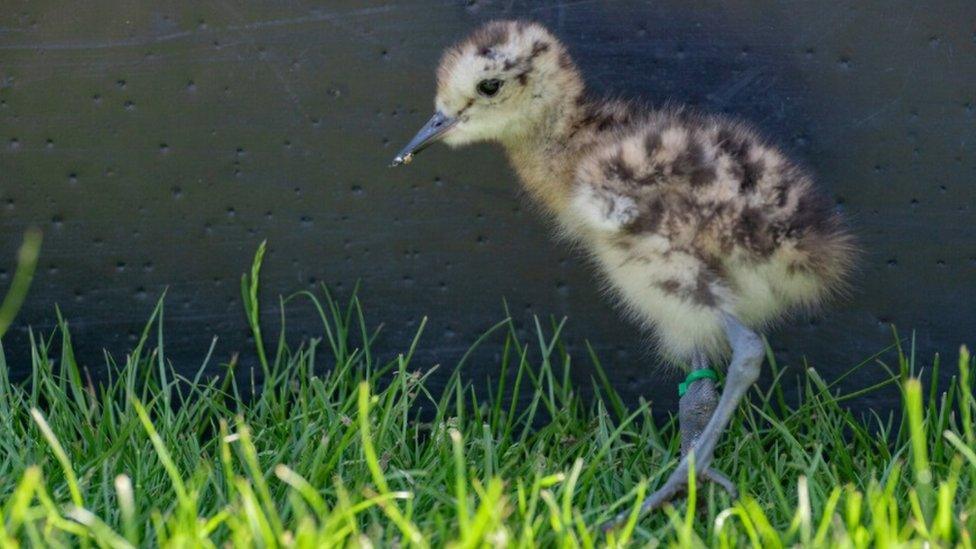Climate change: Rare birds return to Wales after bog project
- Published
The climate change scheme getting rare birds breeding in Wales
Some of Wales' rarest birds have made a remarkable comeback after work designed to fight climate change and flooding in Snowdonia, conservationists say.
For the first time in decades, curlews and golden plovers have been breeding on an area of blanket bog restored by farmers.
Wales hosts 4% of the world's blanket bog habitat, which is highly effective at storing carbon dioxide.
Now conservationists want a major restoration programme funded here.
Work started to fix degraded peatland at Blaen y Coed, an upland farm near Ysbyty Ifan in Conwy county, which lies within the Migneint Special Area of Conservation, in 2017.
Beneath the marshland's spongy surface are deep layers of black peat, built up over millennia as plants decayed in boggy conditions.
These landscapes are now seen as vital in the fight against climate change as they are even better than rainforests at absorbing carbon dioxide and locking it away.
But most are in a pretty bad state after being drained and damaged in the past so the peat could be extracted for fuel.
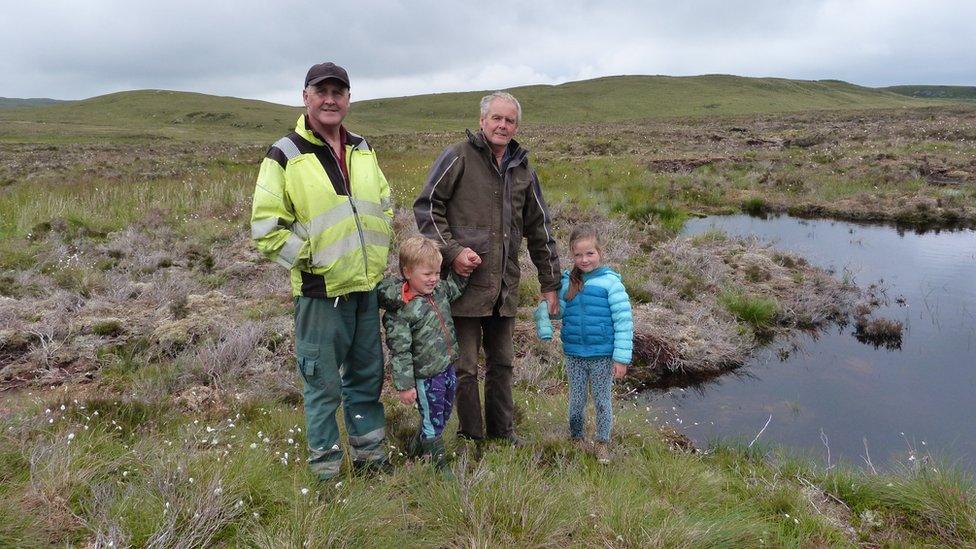
The Ritchie family say it is great to see the birds return to the area
The Ritchie family, who are tenants of Blaen y Coed farm, worked with RSPB Cymru and the National Trust to block old drainage ditches and deep gulleys in the peat.
They created mini dams which allowed pools to form so the landscape could become boggy again.
Four years on, and four breeding pairs of curlew and two breeding pairs of golden plover have returned to the area.
The critically threatened birds had not been seen in the area since the 1990s.
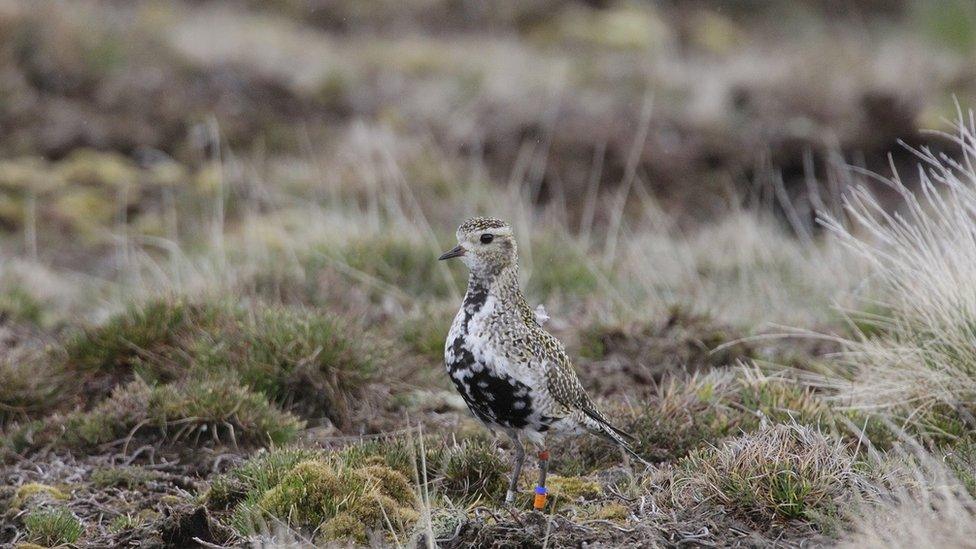
Conservationists hope more schemes can be funded across Wales
The site is also buzzing with large, colourful dragonflies, while the pools are filled with specialist bog plants such as sphagnum mosses, cotton grasses and sundews.
David Smith, senior conservation officer for RSPB Cymru, said he hoped the scheme's success would show the kind of work which could be funded through the overhaul of farming subsidies.
"This is a demonstration of what public money for public goods and state support for agriculture could look like," he said.
"It's absolutely pivotal to our efforts to tackle climate change and a lot could be done in these uplands - but it's all about government investment and policy, prioritising these areas and embedding that into the future agricultural model for rural Wales."
Edward Ritchie said it was "great to hear the curlew back at Blaen y Coed".
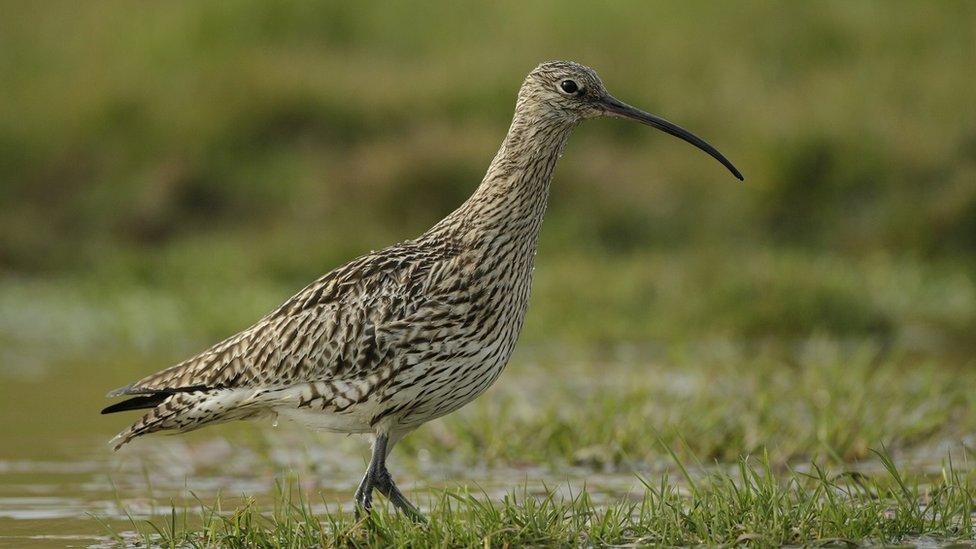
The birds are thriving after not being seen in the area for decades
As well as capturing carbon dioxide, the rewetted landscape will also help the area adapt to the challenges of global warming, including lowering the risk of wildfires while soaking up heavy rain to avoid flooding lower down the valley.
Dewi Davies, who manages the National Trust's Upper Conwy Catchment Project, said the area now provided "a whole suite of vital ecosystem services like carbon storage, water filtration, flood protection and a home for wildlife".
"We can do this across Migneint and other places as well," he said, adding that "funding is key".
"We, as partnership organisations, know what needs to be done, we just need the money and for it to be accessible and easy."
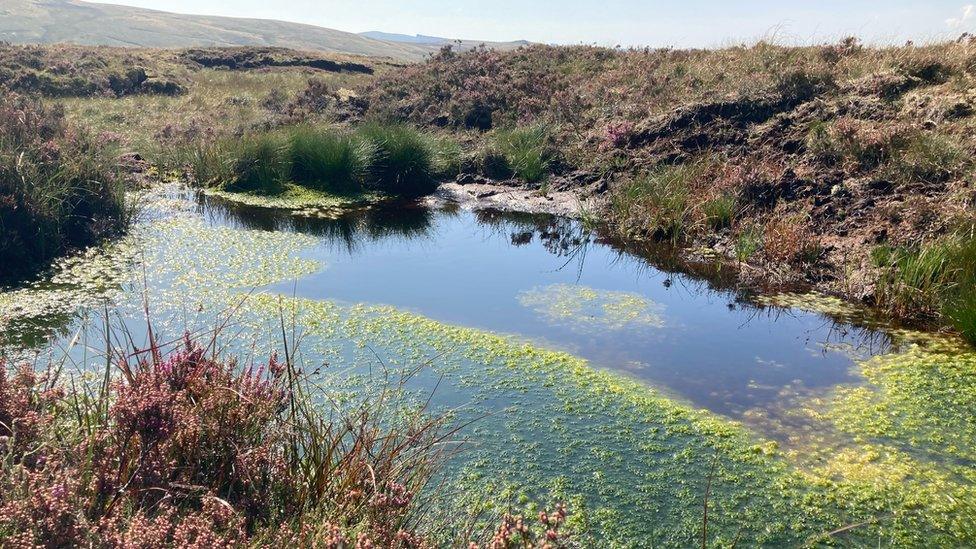
Wales hosts 4% of the world's blanket bog habitat
A Welsh government spokeswoman said bringing peatland into favourable condition had "an important role in the urgent need to mitigate climate change and reverse habitat loss".
She said the National Peatland Action Programme (NPAP) was launched in November 2020, and had an annual budget of £1m.
"We welcome the opportunity to learn from existing projects as we design future support," she added.

EXPLORE WALES FROM HOME: Join Iolo Williams for a guided tour of Pembrokeshire’s hidden gems
ARTS AND HERITAGE: Lose yourself in Welsh creativity and culture

- Published25 August 2021

- Published9 March 2020

- Published15 March 2021
